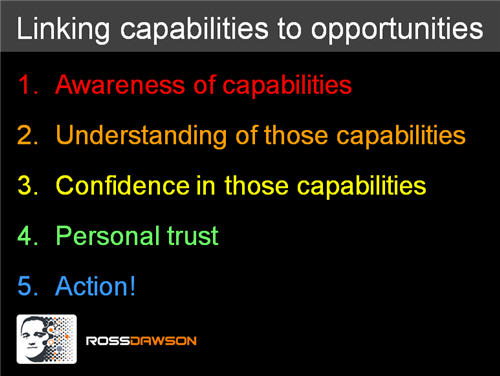Last week I gave a keynote at an internal conference of a large technology services firm that has recently acquired another firm. The conference brought together senior executives and managers from the two organizations so they could get to know each other and plan how they would work together with existing and new clients.
A significant part of my role was to provide a highly upbeat, optimistic, engaging perspective on the future of business. However I also wanted to address the specific issues they would be encountering in combining their capabilities.
Many years ago when I was working with a large law firm to help them develop their client relationship and cross-selling capabilities, I created a simple framework, shown below.
The fundamental issue for any significant professional firm is to match the best possible capabilities in the organization with the relevant opportunities for value creation at their clients.
This begins at the interface with the client. Whoever has any interaction with the client, including the relationship leader and relationship team, has responsibility to identify and bring to the client the most relevant capabilities of the firm. However there are 5 key steps that are required for that to happen.

Read more →

